Torremolinos, it's not 1959 anymore!
Lots of great history and connections for the McMahon's in these two regions of Spain
. When I was five years old my then seven brother and sisters (Michelle and Michael were just a dream at that point), joined our parents Irene and Franklin for a six month stay in Torremolinos, Spain. Back in 1959 it was a sleepy fishing village just beginning to be awakened to the tourist mecca it would become. Then the house was heated with coal delivered by a donkey drawn cart. I remember we stayed in an old house with large windows and massive windowsills. So large were the sills that my brother Hugh and I laid out some blankets and both slept there. I remember riding in the donkey carts, but not much more. Attached here are some of the old photos from 1959 that show the McMahons in and around Torremolinos.
My brother Mark, who was eight years old at the time, remembers more. He tells stories about crossing the road and playing with the kids who lived in the orphanage and with the "gypsy kids" who lived in the caves above the town. Both Mark and I remember the Thanksgiving turkey that was delivered in a straw basket, alive
. The turkey was "harvested" by a local woman who did some cooking for us. The story goes that Mark witnessed the end of the turkey and to this day shy's away from this Thanksgiving staple. My parents wrote a story about our adventures in Spain that was published back in the US. If anyone is interested in seeing this article, I can forward a copy to you. Let me know.
Today Torremolinos has been describe as, "Spain's biggest resort, a Costa del Sol hotspot without cultural attractions or monuments to distract from its straightforward sun, sea and sand recipe, is particularly popular with the snowbird and gay crowds. Calle San Miguel's shops, bars and cafes are a social focus for the city of bargain-priced resort hotels." - TripAdvisor
The house we lived in for six months is long gone, replaced with high-rise apartments and shops. The orphanage was first built in 1935 and called "College of Railwaymen Orphans". The orphanage was closed and pretty much left to crumble
. When my sister Mary visited Torremolinos about 15 years ago with Buck and Nora (nephew and niece) her photos show a broken down empty building. In 1998 the City of Torremolinos "restored, conditioned and equipped (the building) for use as a cultural center. In 2001, renovations were completed and the building was dedicated as the Pablo Ruiz Picasso Cultural Center. Picasso was born in the next town over (Malaga) and lived in the area until the age of 10. He left Malaga moving on to Barcelona and France, and never returned to his home town.
On of the items mary sent me was a hand-written map, drawn by my father, that helped her and now me find the location of house we lived in Torremolinos. It was a nice connection I didn't expect coming from my father all these months and years later.
Alhambra, a Very Impressive Site
We spent a full four hours touring this memorable site
. The Moorish architecture and designs were spectacular, to say the least. Spain is full of wonders, the Alhambra being one of the most impressive. We were very glad to have gotten a chance to see it.
Alhambra has been awarded a World Heritage label from UNESCO. This is how they describe it. "Unique artistic creations, the Alhambra and the Generalife of Granada bear exceptional testimony to Muslim Spain of the 16th century. They form an exceptional example of royal Arab residences of the medieval period: neither destroyed nor changed by the alterations of radical restorations, the Alhambra and the Generalife appear to have escaped the vicissitudes of time. Despite the development that followed the Christian conquest, the Albayzín still bears witness to the medieval Moorish settlement, as its urban fabric, architecture and main characteristics (form, materials, colours), were not changed when it was adapted to the Christian way of life, to survive as a remarkable example of a Spanish-Moorish town
.
Archaeological excavations have shown that the hill where the Albayzín is now situated has been occupied continuously from as early as the Roman period. In the mid-8th century the region's governor built a fortress where the Plaza de San Nicolás is now located. After the disappearance of the Caliphate of Cordoba (1031), the ephemeral Zirid Emirate of Granada replaced it until 1090: the emirs devoted themselves to the embellishment of their capital, constructed on a site of exceptional beauty. A new defensive enclosure was added and around this a settlement grew up. The town prospered under the Nasrid dynasty and this was reflected by considerable development of the city, but Granada did not become of the important centres of Muslim Spain until much later - in 1238, when Muhammad ibn al Ahmar founded the present Alhambra."
La Mancha and Don Quixote
The fictional gentleman from La Mancha has played a significant role in the McMahon Family over the years
. I think Don Quixote was one of my father's favorite literary characters. It was a major event when the musical "Man of La Mancha" staring Richard Kiely came to Chicago for the first time. I think he took all of us all to this production. There is something about the themes, "to dream the impossible dream, to fight the unbeatable foe, to reach for the unreachable star.....that is my quest"......that lends itself to the whole McMahon freelance lifestyle. The story spoke to my father, and as an extension to all of us offspring. I still have a mousepad with the Picasso Don Quixote image on it that my father gave me.
On of the connections my father made to this story was when he started a film distribution company to promote his many documentary films, he named it Rocinante Sight and Sound. Rocinante is Don Quixote trusted horse. I found a windmill named after Rocinante, very cool.
Coming to this region of Spain, walking among the windmills, going to the Dulcinea Museum in Toboso, seeing all the public statues celebrating Don Quixote, Sancho Panza, Dulcinea and Rocinate was a very special experience for me.
Torremolinos, Alhambra and La Mancha
Saturday, December 07, 2013
 Torremolinos, Andalusia, Spain and Canary Islands
Torremolinos, Andalusia, Spain and Canary Islands
Other Entries
-
17Giants Causeway
Sep 0197 days prior Moyle, United Kingdomphoto_camera21videocam 0comment 0
Moyle, United Kingdomphoto_camera21videocam 0comment 0 -
18Glasgow
Sep 0296 days prior Glasgow, United Kingdomphoto_camera0videocam 0comment 0
Glasgow, United Kingdomphoto_camera0videocam 0comment 0 -
19Scotland
Sep 0989 days prior Stirling, United Kingdomphoto_camera43videocam 0comment 20
Stirling, United Kingdomphoto_camera43videocam 0comment 20 -
20Ballquhidder, Gardener's Cottage Stay
Sep 1088 days prior Balquhidder, United Kingdomphoto_camera16videocam 0comment 0
Balquhidder, United Kingdomphoto_camera16videocam 0comment 0 -
21Sights, Signs and Walls of Ireland and Scotland
Sep 1682 days prior Edinburgh, United Kingdomphoto_camera35videocam 0comment 6
Edinburgh, United Kingdomphoto_camera35videocam 0comment 6 -
22Krakow, Auschwitz, Pope J P ll, Salt & Love
Sep 2078 days prior Krakow, Polandphoto_camera30videocam 0comment 4
Krakow, Polandphoto_camera30videocam 0comment 4 -
23Warsaw and Stawiski
Sep 2672 days prior Warsaw, Polandphoto_camera24videocam 0comment 1
Warsaw, Polandphoto_camera24videocam 0comment 1 -
24Prague and the Czech Republic
Oct 0365 days prior Prague, Czech Republicphoto_camera20videocam 0comment 2
Prague, Czech Republicphoto_camera20videocam 0comment 2 -
25Votice, Czech Republic
Oct 0464 days prior Votice, Czech Republicphoto_camera24videocam 0comment 7
Votice, Czech Republicphoto_camera24videocam 0comment 7 -
26Salzburg and the Trip South
Oct 1454 days prior Salzburg, Austriaphoto_camera16videocam 0comment 0
Salzburg, Austriaphoto_camera16videocam 0comment 0 -
27One Day in Venice, We Will Be Back
Oct 1553 days prior Venice, Italyphoto_camera20videocam 0comment 4
Venice, Italyphoto_camera20videocam 0comment 4 -
28Saffron Farm - Week One
Oct 2345 days prior Montedinove, Italyphoto_camera19videocam 0comment 4
Montedinove, Italyphoto_camera19videocam 0comment 4 -
29Saffron Farm - Week Two
Oct 3038 days prior Montedinove, Italyphoto_camera20videocam 0comment 7
Montedinove, Italyphoto_camera20videocam 0comment 7 -
30Saffron Farm - Week Three
Nov 0631 days prior Montedinove, Italyphoto_camera13videocam 0comment 0
Montedinove, Italyphoto_camera13videocam 0comment 0 -
31Rome, Bologna, Verona and Venice
Nov 1324 days prior Venice, Italyphoto_camera31videocam 0comment 3
Venice, Italyphoto_camera31videocam 0comment 3 -
32Barcelona, beautiful Barcelona!
Nov 2314 days prior Barcelona, Spain and Canary Islandsphoto_camera28videocam 0comment 2
Barcelona, Spain and Canary Islandsphoto_camera28videocam 0comment 2 -
33Mediterranean Cruise and Ports-of-Call
Nov 2314 days prior Barcelona, Spain and Canary Islandsphoto_camera21videocam 0comment 3
Barcelona, Spain and Canary Islandsphoto_camera21videocam 0comment 3 -
34Torremolinos, Alhambra and La Mancha
Dec 07 Torremolinos, Spain and Canary Islandsphoto_camera38videocam 0comment 2
Torremolinos, Spain and Canary Islandsphoto_camera38videocam 0comment 2 -
35Faro, Portugal House Sitting
Dec 169 days later Faro, Portugalphoto_camera19videocam 0comment 2
Faro, Portugalphoto_camera19videocam 0comment 2 -
36Morocco for 6 Days
Jan 0428 days later Fes, Moroccophoto_camera29videocam 0comment 0
Fes, Moroccophoto_camera29videocam 0comment 0 -
37Greece: Athens, Delphi, Olympia and Hydra Island
Jan 0731 days later Athens, Greecephoto_camera55videocam 0comment 1
Athens, Greecephoto_camera55videocam 0comment 1 -
38Oman: Wonderful Visit with Michelle and Randy
Jan 2145 days later Muscat, Omanphoto_camera45videocam 0comment 12
Muscat, Omanphoto_camera45videocam 0comment 12 -
39Cambodia: Yoga Retreat and the Super Bowl
Jan 3054 days later Siem Reap, Cambodiaphoto_camera40videocam 0comment 15
Siem Reap, Cambodiaphoto_camera40videocam 0comment 15 -
40Six Days in Vietnam
Feb 0762 days later Da Nang, Vietnamphoto_camera50videocam 0comment 1
Da Nang, Vietnamphoto_camera50videocam 0comment 1 -
41Melbourne and The Great Ocean Road
Mar 1194 days later Melbourne, Australiaphoto_camera42videocam 0comment 7
Melbourne, Australiaphoto_camera42videocam 0comment 7 -
42Sydney or Melbourne, Melbourne or Sydney?
Mar 20103 days later Sydney, Australiaphoto_camera38videocam 0comment 0
Sydney, Australiaphoto_camera38videocam 0comment 0 -
43San Francisco, CA!!!
Mar 21104 days later San Francisco, United Statesphoto_camera22videocam 0comment 0
San Francisco, United Statesphoto_camera22videocam 0comment 0
Comments
2025-05-22
Comment code: Ask author if the code is blank

 Torremolinos, Andalusia, Spain and Canary Islands
Torremolinos, Andalusia, Spain and Canary Islands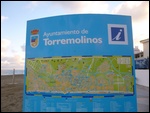
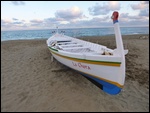



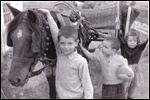















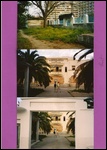
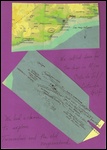
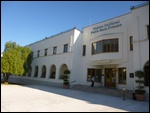
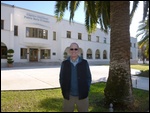
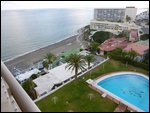
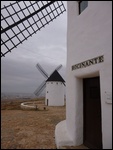
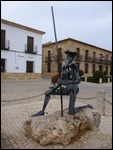
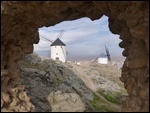
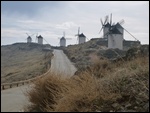
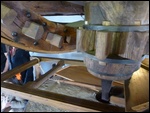
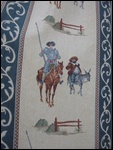
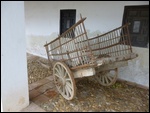
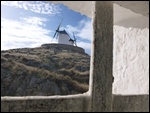
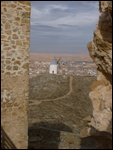
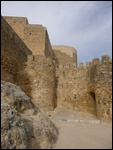
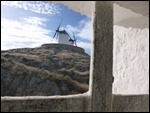
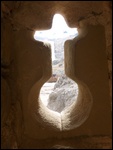

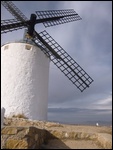
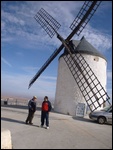
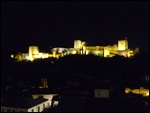
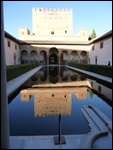
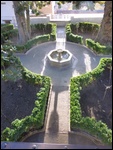
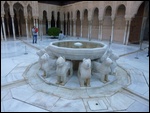

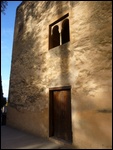
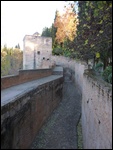
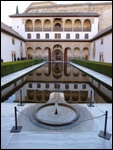
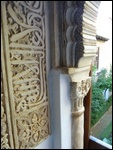
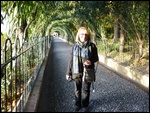
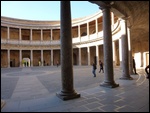
Cathy
2013-12-16
Awesome shots, Patrick! Especially those of the windmills. Love this entry, and your memories of your family. It's so special:)
alice-patrick
2013-12-17
Thanks. Spain has been magical for me, and us. We are hoping to learn the language better and then come back for another visit. Good to talk with all of you a couple of days ago.
Patrick